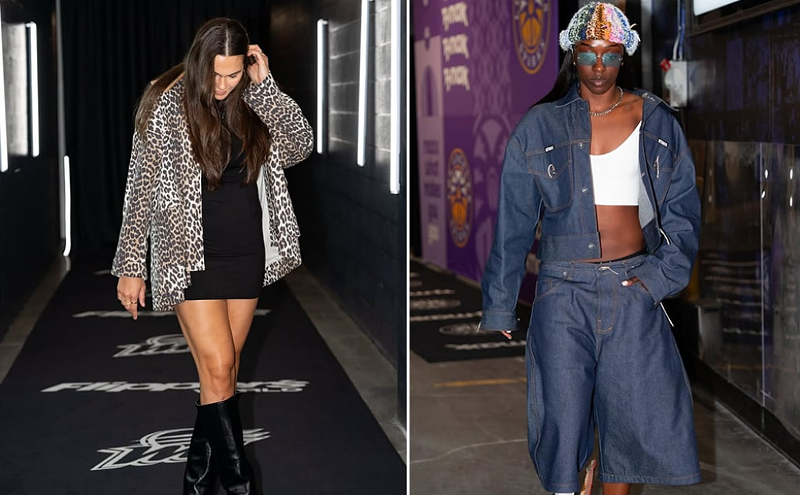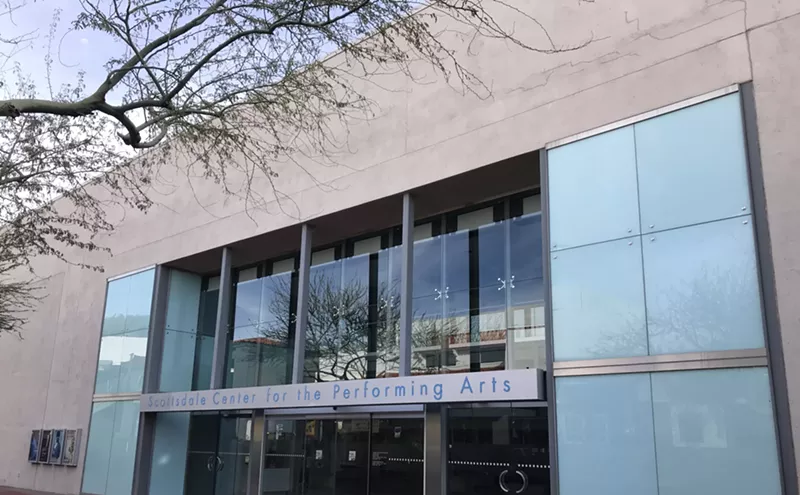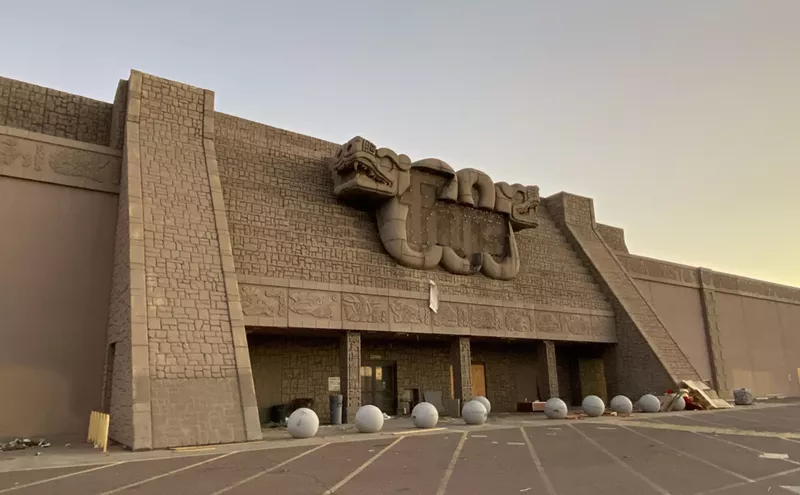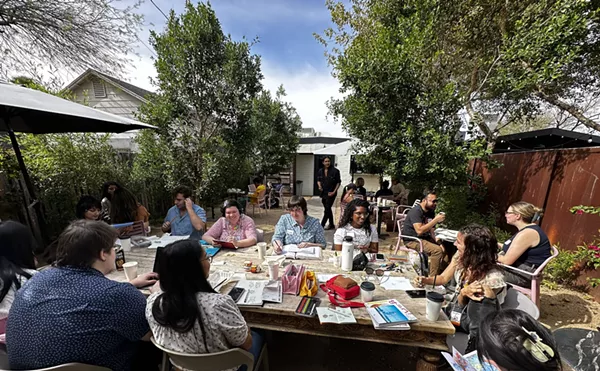I suffered an awful sunburn after tubing down the Salt River. I'd tubed once before, in high school. People were having a lot of hot, dirty, loud, gross fun. Nothing had changed in 10 years except my perspective.
Artist Kade Twist and I didn't talk about the Salt River when we met recently. But later, I came across his 2010 video installation, "For You Shall Pass Through the Water of Another." A tween boy holds a deflating American-flag beach ball like it's a dead rat in Twist's unsettling slow-motion footage of tubers juggling Styrofoam coolers and floating-picnic provisions, their unwieldy tubes propped against their fleshy selves.
As I watched the video, it occurred to me that those sunburn scars just might be my cosmic comeuppance. I never thought about tubing as a profane mass baptism on sacred ground in my city's, um, drinking water.
Kade Twist makes you think like that. He's one-quarter of Postcommodity, a trans-disciplinary American Indian arts collective. The four were in Sydney for its 18th Biennale, which opened earlier this summer. Two years ago, Phoenix artists Angela Ellsworth and Claudio Dicochea went to Sydney for the 17th Biennale (individually). Both are represented by Lisa Sette Gallery, and their work generated big buzz.
You may not have heard much about Phoenix's contributions in Sydney this year, but Postcommodity did make a splash Down Under — even before the Biennale actually started. Gerald McMaster, co-artistic director of the event, specifically mentioned Postcommodity and its conceptual installation "Do You Remember When? 2012" in a press conference at last February's unveiling. They were one of Canadian Art Magazine's five highlighted exhibits. The Wall Street Journal also included the collective in its pre-show coverage. Australia's Object Magazine gave more than a shout-out to "Do You Remember When? 2012" by labeling it "haunting" and commenting on its surprising venue, the more traditionally inclined Art Gallery of New South Wales.
In a world where museums ask us to check our hobo bags at the desk, what's surprising is that Postcommodity was invited to bring in a concrete saw to cut a table-size square hole — a portal between worlds — in the exhibition-space floor. The slab stands on end nearby as a sort of trophy representing indigenous intervention in the face of a Western worldview. ASU Art Museum originally commissioned this work in 2009, when Postcommodity cut a neat hole in the floor of ASU Art Museum's Ceramics Research Center (a building that sits atop a prehistoric Hohokam site). That installation included a soundtrack — the collective's performance of a Pee Posh social dance song. For its Sydney show, Postcommodity reworked the soundtrack to include Aboriginal-language speakers from the New South Wales region.
Twist is an ASU MFA and co-founder of Postcommodity. (Local artist Steven Yazzie, also a co-founder, left the collective — no drama — in 2010.) The collective's Cristóbal Martínez is a doctoral student in linguistics studying digital literacy within the context of indigenous sovereignty with ASU's James Paul Gee, a video game wonk. Two other Postcommodity members, Raven Chacon, another co-founder, and Nathan Young, live in New Mexico and Texas, respectively. The collective met Chacon through experimental music circles and the First Nations Composer Initiative. Twist and Young met as undergrads at the University of Oklahoma, where they both studied under multi-disciplinary artist Edgar Heap of Birds. They've been collaborating on and off since college.
Postcommodity's next big conceptual installation is slated for fall 2013 and meets head-on a familiar place, context, and discourse: the Mexican-American border. The project, "Repellent Fence," will involve a hunk of Tohono O'odham Nation's sacred indigenous homeland that intersects the beleaguered border and vinyl "scare eye" balloons, huge versions of the ones that farmers float in fields to repel birds.
Postocommodity hopes people will make an adventure of visiting "Repellent Fence" in person, but the collective will include extensive documentation, including videography and aerial photography.
Twist describes the installation as straddling the border like a Band-Aid. "That border fence is a huge wound that keeps people from realizing the ground beneath their feet."
Martínez offers a different analogy. "Our repellent border fence is on two different time scales. Our fence is like water. Rather than divide, it connects."
"It repels the idea of a border," says Twist.
It's intended to spark discourse, as the collective involves academia, the media, and institutions in its vision of border-crossing as — of all things — humanizing.
"How can you tease out a lot of different philosophies about life in the most geopolitically important places in the world?" Twist asks.
The collective doesn't see its work as activism, but as a simple gesture that creates and positions metaphors to shed light on the complexity of borders.
Twist explains that the collective is not interested in advocating for the master narrative of economic oppression. "It's a migration of necessity. The border crisis is merely a symptom of economic and trade policies."
The narrative of the piece is contemporary, although, as Martínez says, "These people have been working these trade routes since time immemorial. It's been happening for thousands of years."
That's thousands of years of connected knowledge, stories, and technologies of indigenous and migratory people.
The collective wanted "Repellent Fence," originally conceived in 2006, to be its first project.
"It's bizarre to invest that much time and effort into a project that's so ephemeral and vulnerable in one of the remote places in the Western Hemisphere," says Twist. "It will be exciting to be outside of the election year rhetoric — new Mexican leadership, possible new U.S. leadership," he trails off before adding, "At the end of the day, they're just balloons filled with air."












